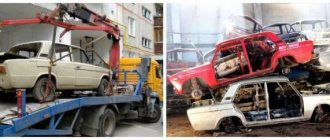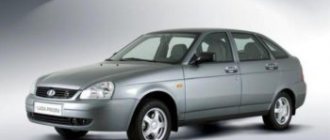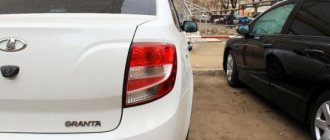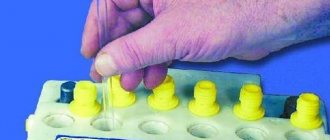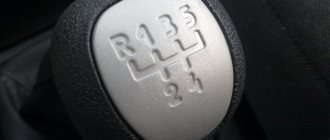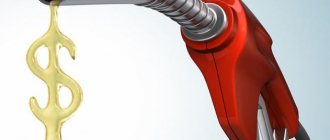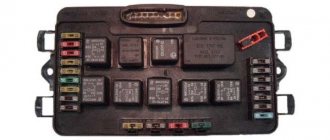Specifications Reviews
The domestic sedan VAZ 2115 is known to almost everyone; its production was launched in 1997, that is, it appeared earlier than the VAZ 2114, and came to replace the VAZ 21099 in the company’s line.
The production of this car lasted until 2012 and after that they created a now popular replacement, the Lada Granta. Over the entire period of production, the model gained considerable popularity in our country, and once it was subjected to restyling, the essence of which was to replace the moldings.
There is no point in discussing her appearance, since you have all seen her and know what she looks like. Dimensions:
- length – 4330 mm;
- width – 1650 mm;
- height – 1402 mm;
- wheelbase – 2460 mm;
- ground clearance - 170 mm.
Engine
The gasoline engine with a carburetor power supply system is located transversely at the front. Unit volume 1.5 l. with a power of 76 hp. and 5600 rpm, 4 in-line cylinders with 8 valves.
Later, the engine was modernized and 16 valves were built into it, like on most modern cars. The maximum speed of the engine is 165 km/h, and acceleration to 100 km/h is possible in 13.2 seconds.
Its fuel consumption is economical:
- in the city 8.9 l/100 km.
- on the highway 6.5 liters.
- in mixed mode 7.6 l.
In addition to the main engine option, the “tag” has various power variations of the 1.6 liter engine: 80/81/98 hp. With this unit installed, the car can accelerate to 160 km/h in 13.5 seconds. to "hundredth".
Consumption accordingly also increases to 10 liters in the city, 5.7 liters. outside the city and 7.6 l. average. The system of such an engine has been changed, and fuel injection is carried out multipoint. Even fuel costs more to use, namely AI 95. If you wish, you can choose a 1.3 liter engine and a 1.5 liter, but with 78 hp.
Interior
The interior decoration is simple, with regular chairs with fabric upholstery. In the back there is a sofa for three passengers. There is not much space, but in principle it is enough. There is a simple stove, which is very easy to operate, since everyone is familiar with this unit.
The steering column is familiar to many - a simple 3-spoke steering wheel. The instrument panel is also made in the classic style for AvtoVAZ, these are ordinary analog gauges and a small and uninformative on-board computer.
The trunk of the car, of course, is not particularly large, but for ordinary purposes it is enough. The luggage compartment volume is 445 liters.
In principle, the VAZ 2115 is an acceptable car for its price; of course, it has disadvantages and problems, but the price tells you about it.
Weight category VAZ-2115
The car is quite light; the curb weight of the VAZ 2115 will be 970 kg with the basic configuration and 1 ton with the standard and luxury configuration.
The permissible gross weight is 1395 kg, which corresponds to 425 kg of the vehicle's carrying capacity.
It is worth mentioning the weight of the trailer without brakes is a possible 300 kilograms and with brakes is a maximum of 750 kilograms.
Tank volume and why it changes
According to the technical documentation for the VAZ-2115, this car has a fuel tank with a nominal volume of 43 liters.
However, its design feature is a long neck, into which you can pour another 2 to 5 liters. There is a fierce debate among car enthusiasts over how many liters can actually be placed in the tank of a standard “tag”.
Many even believe that in cold weather a larger amount of fuel can be placed in the container than on a hot summer day.
In fact, the reason for the change in the holding volume of fuel is the deformation or stretching of the tank. If the surface of this spare car part has many dents, then its capacity will decrease. Over time, some car enthusiasts begin to notice that more gasoline is placed in the tank for refueling the car; this is due to the swelling of the tank.
It is unknown what the displacement will be in the latter case, but in practice, service station specialists have encountered tanks with a capacity of 50 liters (excluding the neck).
Problems of the VAZ-2115 fuel tank
The gasoline tank on the VAZ-2115, as in any other car model, is made of metal. This material tends to stretch and compress under the influence of external forces. This is far from the only problem with fuel capacity in this car. Most often, owners of this vehicle encounter the following problems:
- fuel leakage;
- incorrect operation of the sensor;
- design flaws.
The first and last faults are often related. The fact is that in carburetor models a separator is used. This device is necessary to collect gasoline vapors and condense them. After the vapor turns into liquid, it is drained back into the tank.
Most VAZ-2115s are equipped with a plastic separator, which over time becomes covered with cracks, melts and becomes deformed. In such cases, it is necessary to replace it with a metal model, which is more resistant to external influences.
The injector does not have such an element in its design.
Incorrect display of the fuel level in the tank can be caused by two reasons:
- If, after starting the engine, the instrument on the panel shows different values, then you need to look for a problem in the handbrake area. There is a ground wire running through it, the fastening of which may become loose when the vehicle is used. It is enough to tighten two bolts for the problem to disappear.
- After repairs, the gasoline consumption control lamp may come on prematurely. This is due to the fact that the float sensor located in the fuel container is triggered ahead of time. At the moment when the float drops to a certain level, the contacts close. It is enough to bend the limit switch slightly so that the closure occurs a little later.
Remember that all work on the fuel system must be carried out in compliance with safety rules.
Why does the VAZ-2115 grab but won’t start?
What to do if water gets into the tank
The volume of gasoline poured may become smaller if liquid accumulates in the tank. The parameters of the container will not change, but the composition of its contents will be different. When water gets into the tank, you can observe the following:
- difficulty starting the car in the morning;
- uneven engine operation;
- the need to warm up the car longer before starting.
Water enters the tank for various reasons. You can remove it in one of the following ways:
- Mix pure alcohol (from 200 to 500 milliliters) with gasoline, then pour these liquids into a container for fuel.
- Through the spool on the fuel rail. This is a more complicated method, since you will need to drain the liquid using a hose into any transparent container. To do this, apply voltage to the fuel pump using the diagnostic block.
- Drain manually using a long, thin hose from a drip line. You will need to place a bucket or any container under the liquid in the inspection hole or simply below the tank level.
You can prevent water from entering the gas tank by maintaining a constant fuel level in it (it is advisable to refuel “to capacity”). If you need to add gas on a rainy or foggy day, fill the fuel container 100%.
This simple technique will allow you to displace moist air from the system, which settles as condensation during movement. In late autumn, pour pure alcohol into the system (200 milliliters is enough) to remove accumulated water and prevent it from freezing.
Information - How much does a car weigh?
A car's directional stability and handling are also directly related to its weight. The peak of popularity of large, heavy cars abroad occurred in the 50-60s of the last century. Then the auto industry produced truly gigantic cars. For example, the Cadillac Eldorado modification 8.2 weighed almost 3 tons. Agree that for such a weight, an appropriate makeweight is needed.
But as time passed, it became clear that in order to further develop and improve the most important characteristics of the car, it was necessary to resort to reducing its overall weight.
And if we compare the middle of the last century and today, cars have lost half, or even more, of their own weight.
Plastic, carbon fiber reinforced plastic, light metals - all these innovations have made it possible to make the weight of a passenger car significantly lower.
Of course, for lovers of everything big and heavy, cars are produced that look like steamships that drink buckets of gasoline, but this is rather an exception to the rule.
Weight of passenger cars in tabular format
We present to your attention a table that shows the weight of the car by brand.
| car model | Curb weight |
| Weight of the Oka 1111 car, weight of the Okushka | 635 kg |
| Weight of the car Oka 1113 | 645 kg |
| Weight of a VAZ 2101 car, weight of a penny | 955 kg |
| Weight of the VAZ 2102 car | 1010 kg |
| Weight of the VAZ 2103 car | 965 kg |
| Weight of the car VAZ 2104, weight of tens 2110 | 1020 kg |
| The weight of the VAZ 2105 car, the weight of the five | 1060 kg |
| Weight of the VAZ 2106 car, weight of the six | 1045 kg |
| Weight of the VAZ 2107 car, weight of the seven | 1049 kg |
| Weight of the VAZ 2108 car | 945 kg |
| Weight of the VAZ 2109 car, weight of the nine | 915 kg |
| Weight of the VAZ 2111 car | 1055 kg |
| Weight of a VAZ 2112 car, weight of a twelve-wheeler | 1040 kg |
| Weight of the VAZ 2113 car | 975 kg |
| Weight of the VAZ 2114 car, weight of the four | 985 kg |
| Weight of the VAZ 2115 car, weight of the tag | 1000 kg |
| Weight of the VAZ 2116 car | 1276 kg |
| Weight of the VAZ 2117 car | 1080 kg |
| Weight of the Niva 2121 car | 1150 kg |
| How much does a Chevrolet Cruze weigh (Chevrolet Cruze weight) | 1285-1315 kg |
| How much does a Chevrolet Niva weigh (Chevrolet Niva weight) | 1410 kg |
| How much does a GAZ (Volga) weigh, the weight of a Volga 24 | 1420 kg |
| How much does GAZ 2402, GAZ 2403, GAZ 2404 weigh? | 1550 kg |
| How much does GAZ 2407 weigh? | 1560 kg |
| Car weight Moskvich 314 | 1045 kg |
| Weight Moskvich 2140 | 1080 kg |
| Weight Moskvich 2141 | 1055 kg |
| Car weight Moskvich 2335, 407, 408 | 990 kg |
| How much does a UAZ 3962, UAZ 452 weigh, how much does a UAZ loaf weigh? | 1825 kg |
| How much does UAZ 469 weigh? | 1650 kg |
| How much does UAZ Patriot weigh? | 2070 kg |
| How much does UAZ Hunter weigh? | 1815 kg |
| How much does Nissan weigh (weight of nissan x-trail car) | 1410-1690 kg |
| How much does Qashqai weigh (weight of Nissan Qashqai car) | 1297-1568 kg |
| How much does Nissan Juke weigh (Nissan Beetle weight) | 1162 kg |
| Ford Focus car weight (how much does a Ford Focus weigh) | 965-1007 kg |
| Weight of the Ford Focus 2 car (how much does the Ford Focus 2 weigh) | 1345 kg |
| Weight of the Ford Focus 3 car (how much does the Ford Focus 3 weigh) | 1461-1484 kg |
| Ford Kuga car weight (how much does a Ford Kuga weigh) | 1608-1655 kg |
| Ford Escort car weight (how much does a Ford Escort weigh) | 890-965 kg |
| Weight of the Renault Logan car (how much does the Renault Logan weigh) | 957-1165 kg |
| Renault Duster car weight (how much does a Renault Duster weigh) | 1340-1450 kg |
| Renault Sandero car weight (how much does a Renault Sandero weigh) | 941 kg |
| Weight of the Opel Mokka car (how much does the Opel Mokka weigh) | 1329-1484 kg |
| Weight of the Opel Astra car (how much does the Opel Astra weigh) | 950-1105 kg |
| Mazda 3 car weight (how much does Mazda 3 weigh) | 1245-1306 kg |
| Weight of the Mazda CX-5 (how much does the Mazda CX-5 weigh) | 2035 kg |
| Mazda 6 car weight (how much does Mazda 6 weigh) | 1245-1565 kg |
| Volkswagen car weight (how much does a Volkswagen Tuareg weigh) | 2165-2577 kg |
| Weight of a Volkswagen Polo car (how much does a Volkswagen Polo weigh) | 1173 kg |
| Weight of the Volkswagen Passat car (how much does the Volkswagen Passat weigh) | 1260-1747 kg |
| How much does a Toyota Camry weigh (Toyota Camry weight) | 1312-1610 kg |
| How much does Toyota Corolla weigh (weight of Toyota Corolla) | 1215-1435 kg |
| How much does a Toyota Celica weigh (Toyota Celica weight) | 1000-1468 kg |
| How much does a Toyota Land Cruiser weigh (Land Cruiser weight) | 1896-2715 kg |
| How much does the Skoda Octavia weigh (Skoda Octavia weight) | 1210-1430 kg |
| How much does the Skoda Fabia weigh (Skoda Fabia weight) | 1015-1220 kg |
| How much does the Skoda Yeti weigh (Skoda Yeti weight) | 1505-1520 kg |
| How much does a Kia Sportage weigh (KIA Sportage weight) | 1418-1670 kg |
| How much does Kia Sid weigh (KIA Ceed weight) | 1163-1385 kg |
| How much does the Kia Picanto weigh (KIA Picanto weight) | 829-984 kg |
Thus, it turns out that if we take, so to speak, “in general for the hospital,” then the average weight of a passenger car is approximately from 1 to 1.5 tons, and if we talk about SUVs, then the whole weight already shifts from 1.7 tons to 2. 5 tons.
weight of a passenger car, how much does OKA weigh, how much does a car weigh, weight of a car, how much does a Matiz weigh, how much does a Matiz weigh, weight of a Skoda car, weight of an Audi
Basic Concepts
Body geometry refers to the exact dimensions of the vehicle established by the designers of the manufacturing plant. The main parameters of paramount importance are:
- width – both front and rear tracks;
- length of the wheelbase;
- the distance between the side members and their length.
As practice shows, a violation of one or several of the above-mentioned parameters leads to a noticeable deterioration in terms of vehicle controllability.
The secondary dimensions are as follows:
- door openings;
- windows;
- engine compartment volume;
- trunk capacity;
- car interior size.
If these standards are violated, this only leads to a deterioration in the appearance of the vehicle.
A track is the distance between coaxial wheels. Moreover, this distance is measured from point to point, which are located in the center of the tread.
In turn, the wheelbase is the distance between the axles of the car. The control points here are the middle of the hubs.
LADA 2109 I generation Hatchback – modifications and prices, classmates LADA 2109 hatchback, where to buy
Georgy Konstantinovich Mirzoev, who worked at AvtoVAZ from 1975 to 1996 as chief designer, wrote in his book of memoirs “The Flame of High Thought” that when working on a project for a completely new family of front-wheel drive passenger cars for the domestic auto industry, the Togliatti management counted on the help of Fiat.
However, the Fiat people themselves refused to cooperate with the Soviet auto giant on the front-wheel drive project, having engaged their subsidiary UTS as consulting partners. The ideas of UTS, which was one of the leading European engineering companies in the field of technological developments, adopted by Tolyatti engineers, were embodied in the concept of the first representative of the front-wheel drive family Lada Samara/Sputnik VAZ 2108. After the launch of the G8 series, childhood illnesses and quirks of which were treated right along the way, the next offspring of the family - the five-door hatchback VAZ 2109 - was treated much more carefully. It was decided to finalize the technical characteristics of the VAZ 2109 with the help of trusted partners from Porsche. After the resounding success of the Niva, through the joint efforts of VAZ and Porsche, which became a bestseller on the world market and sold more than half a million copies for export, the “nine” simply had to “repeat and surpass.”
Articles and reports from the early nineties especially emphasized the fact that the German partners were not involved in the development, but rather in the final refinement of the finished car, created by VAZ in-house, starting from the characteristic angular appearance and ascetic interior trim and ending with original technical solutions.
The main enemy of the VAZ 2109, according to eyewitnesses, was the bureaucracy. Unable to adequately and timely respond to proposed changes, the clumsy bureaucratic machine has become the reason for the rejection of many innovative solutions.
A new, original or, God forbid, non-standard idea proposed by young VAZ engineers and designers had to go through a long path of approvals, approvals and permits, and more often than not, buried under tons of paperwork, it was lost or outright ignored.
The proposals of the German partners, on the contrary, were met with excessive enthusiasm and were approved even before technical tests were carried out. After some time, it turned out that the proposed solution was not suitable for the model being developed, and a corresponding conclusion was sent to Porsche.
The German partners instantly proposed a new option, which the Togliatti people had to approve or reject within a strictly allotted time frame. When the proposal was finally sent to the engineers, the deadlines, as a rule, were already running out, and the plant management, playing it safe, approved it in advance.
After a couple of weeks, the designers reported that it was impossible to use the proposed option on the model being developed, and everything was repeated all over again. Everything would have been fine (experience, he is the son of difficult mistakes), if not for one “but” - for each approved proposal, VAZ paid its German partners in full foreign currency.
It was especially insulting to the project team working on the front-wheel drive hatchback when their own rationalization proposals, categorically rejected by nomenklatura officials, ended up being similar to the proposals of their German colleagues, each idea of which was generously paid for according to the contract. Some of the most illustrative examples, according to the memoirs of G. Mirzoev, were cases with hatchback doors and a battery platform.
Initially, the doors proposed by the German company did not want to become as needed. As a result, Tolyatti designers prepared a door without sagging and 200 grams lighter.
After several weeks of convulsive engineering research, the German version was declared inapplicable and officially rejected. Designers from Porsche instantly sent a new proposal.
Spacers as a means of increasing ground clearance
Some support kits (for example, SS-20) have so-called “spacers” (12mm). They are installed between the strut support and the car body and are divided into polyurethane, aluminum and plastic. I think the positive effect is clear - higher ground clearance, but the negative effects will be different:
- In the first case, on uneven roads the polyurethane contracts and the bushings deform the car body.
- In the second, ride comfort is not reduced, and the body is not deformed, but they provoke corrosion processes on roads with a sand-salt mixture.
- In the case of plastic, no negative impacts have been identified.
Shock absorbers and ground clearance, where is the truth?
When the car is standing still, the shock absorbers will not lift the body - after all, it hangs on springs. The role of the struts can be understood in motion, when the car sways and “pecks” on soft or dead shock absorbers. You drive off the curb and your car’s nose hits the asphalt! If the shock absorbers are in good condition, they will “catch” the car halfway. Thus, shock absorbers do not affect ground clearance, but have the same effect as increased ground clearance.
Alternative shock absorbers may have a longer rod, which will provide more suspension travel. We discuss these subtleties in the topic “which shock absorbers are better to choose.”
How much does a car weigh?
How much does it weigh …?
A car's directional stability and handling are also directly related to its weight. The peak of popularity of large, heavy cars abroad occurred in the 50-60s of the last century. Then the auto industry produced truly gigantic cars. For example, the Cadillac Eldorado modification 8.2 weighed almost 3 tons. Agree that for such a weight, an appropriate makeweight is needed.
But as time passed, it became clear that in order to further develop and improve the most important characteristics of the car, it was necessary to resort to reducing its overall weight. And if we compare the middle of the last century and today, cars have lost half, or even more, of their own weight. Plastic, carbon fiber reinforced plastic, light metals - all these innovations have made it possible to make the weight of a passenger car significantly lower.
Of course, for lovers of everything big and heavy, cars are produced that look like steamships that drink buckets of gasoline, but this is rather an exception to the rule.
Modernization
Whatever one may say, after several years of operation, even the most elegant car wants to be modernized. Automakers have long understood this, periodically introducing restylings and tuners making changes on their own.
Regarding the 15th model, many attempts at modernization were carried out at the amateur level. Some images of such tuned cars have every right to be called masterpieces, others, to put it mildly, are not impressive.
When the car's mileage reaches 50 thousand km, it's time to think about the suspension. Tuners recommend upgrading it first, as one of the weakest areas.
Over time, the reaction is no longer the same as before, when even on the icy road 2115 confidently passed through flat sections and turns. Now the rear of the car begins to toss from side to side, and the acceleration dynamics and handling are no longer the same.
The second, no less important note relates to the comfort of the car. Over time, the already frail sound insulation completely wears out. Everything starts to creak, including the rear parcel shelf.
Modernization also concerns the introduction of various options. To be honest, almost all VAZ car models reach the end user as “semi-finished products”. There is no competent anti-corrosion treatment of the body, there are no required comfort and safety parameters.
Here are the activities that are usually carried out, such as tuning and modernization on the 15th model:
- Installation of lockers and protection of the power unit crankcase;
- Replacement of sedan door and trunk locks with new, silent ones;
- Replacement of covers;
- Modernization of disks by installing new cast ones;
- Noise insulation and anti-creak treatment of various parts of the body, necessarily the roof and doors;
- Body painting and anti-corrosion treatment of the floor and other components most susceptible to corrosion;
- Installation of body reinforcement (struts);
- Replacing bumpers;
- Replacement of wing and spoilers;
- Remodeling doors and much more.
Painting
Painting has a longer history than the car itself. At least if you mean a paint gun. Modern tools are made at the highest level and make it easy and quick to paint a part or the entire body in the appropriate color.
Note that small scratches on the paintwork of the 15th model can be easier to remove by polishing. But if they are too deep and reach the ground or metal, you have to paint them.
As you know, painting can be carried out in 2 ways: partially, when the parts are painted with a transition, or completely.
Transition painting is applicable only in cases where one or another body section is being restored. This method has both advantages and disadvantages.
Note. In particular, with this method, body parts will not need to be dismantled, and therefore the structure will not be damaged. On the other hand, partial painting cannot guarantee the long-lasting effect of paintwork as much as complete painting.
It was written above about the pistol, but you can paint the 15th model in your garage using a spray can. But this method has many disadvantages:
- The spray can has an uneven spray, which significantly complicates painting (an overly saturated jet causes smudges);
- It is difficult to choose the appropriate color of paint sold in cans;
- Spray paint fades faster over time (such paint protects the surface less well).
Advice. If, however, you chose the spray can painting method, it is recommended to apply thin layers, keeping the spray can as far as possible from the body part.
Example of painting a rusty part
Let's say that this is the wing of the 15th VAZ model:
- Wash the car completely;
- Get rid of rust by sanding the part with coarse sandpaper and applying a degreaser;
- Restore the geometric dimensions of the part by applying layers of putty.
Attention. If the body part is subject to frequent vibrations, then ordinary putty will not work. You need to choose one with aluminum particles.
Regarding the application of putty:
- It must first be properly diluted with the hardener, doing this in small portions (the mixture dries quickly);
- You need to apply it directly to the surface, remembering that the putty dries for about a quarter of an hour if the room temperature is at least 20 degrees.
Read also: Grass active foam pink
We continue the painting stage:
- After the putty has dried, you need to start cleaning (treating the surface with sandpaper until the part becomes smooth);
- We apply the first layer of primer, which will protect the part from corrosion and guarantee the durability of the paintwork.
Note. When choosing a primer, you need to pay attention to its consistency with the color of the car’s paint. So, if the car is painted black, the primer should be of some dark shade; if it is silver, it is advisable to select a light shade.
More on primer:
- It is advisable that it be applied using special equipment and tools (spray gun, compressor, respirator, etc.);
- Before applying primer, it is recommended to cover the car with a special film or, in extreme cases, paper;
- It is advisable to apply the primer in two layers, first degreasing the surfaces.
- After the soil has dried, it must be treated with 800-grit sandpaper;
- We now prepare the room for painting, removing all the dust around with water (we cover all parts of the car except the wing);
- We apply the paint in several layers, leaving each layer to dry for 1 minute (as a rule, after the 3rd layer the wing will already be what it needs);
- We wait for 15 minutes to dry completely, and then coat it with varnish.
Advice. Before applying the varnish, it is recommended to go over the paint with a clean cloth, since the varnish itself is very sensitive to remaining grains of sand (even if they are microscopic).
The varnish is also applied in two layers, allowing it to dry for 2 minutes.
Body reinforcement
This modernization helps to significantly simplify the operation of the machine. After such strengthening, cornering on VAZ models will be more confident, even at high speed. In addition, and more importantly, the degree of deformation is reduced.
It is recommended to install spacers from well-known manufacturing companies, but it is better to avoid products made in a handicraft manner.
Installation will not create any difficulties. It will be enough to buy the part, and then install and secure it accordingly.
Trunk Features
The features of the luggage compartments of various modifications of models 2113, 2114, 2115 include an acceptable level of capacity and the possibility of transforming the interior to increase useful volume.
The VAZ 2115 is distinguished by a convenient loading height and a larger trunk volume than the Lada 2115. Otherwise, the design of the cargo compartment is identical to other models.
Cars are equipped with a standard shelf; it is installed vertically and separates the luggage compartment and the interior. If necessary (for example, when transporting large cargo that requires folding the rear seats), this shelf and the vertical curtain can be removed.
The VAZ 2115 is distinguished by a convenient loading height and a larger trunk volume than the Lada 2115. Otherwise, its design is identical to other models.
The VAZ 2113, 2114, 2115 models, which are modifications of the “eights”, “nines” and “ninety-nines”, respectively, have become more ergonomic, easy to use, and practical. The cars received spacious luggage compartments, which increased the amount of cargo transported. The presence of a number of shortcomings does not deter drivers: some inconveniences can be corrected on their own.
Cars of the VAZ 2113, 2114, 2115 family are popular not only in Russia, but also in the CIS countries. This is due to the wide distribution of these cars, their unpretentiousness, relative reliability, maintainability and cost. The machines have an acceptable loading niche capacity, which makes them convenient to use for solving everyday household problems or running a small business.
Weight in the VAZ 2114: location, possible problems and their solution
The vehicle's electrical network is connected to a common “minus”, or mass, which is the entire body. That is, the body as a mass on the VAZ 2114 represents a single source of negative charge. And the source of negative charge is the connection between the case and the negative terminal of the battery.
If the wires connected from the electrical network to ground oxidize (come off), problems arise with the electronics, engine or control system. In case of typical “mass” faults, for example, “blinking” of the rear lights instead of turning on the turn signal or poor cranking of the starter, first check the condition of the wires connected to ground and contact points.
LADA Kalina
VAZ 2114, 2115, 2113 technical characteristics. trunk volume of Lada 2114
Kalina are front-wheel drive cars of the “small class II group” (segment “B” by European standards). The family includes a sedan, a five-door hatchback and a station wagon. These three VAZs became the first AvtoVAZ “projects” developed using computer technology.
VAZ-1117 (2004–2018)
VAZ-1117 or LADA Kalina 1 - five-door station wagon
It has a narrowed front and a powerful rear with a large trunk lid. But the transitions between different parts of the car are smooth, so the car as a whole looks harmonious.
Lada Kalina has a shorter length and width than Lada Samara, therefore it has better maneuverability and is more suitable for driving on busy city roads
VAZ-1118 (2004–2013)
Lada Kalina Sedan seems small, but this is an optical illusion, since the dimensions are identical to 2117
VAZ-1118 (LADA Kalina sedan) seems smaller than a sedan, but this is an optical illusion, since their dimensions are the same. The front end can be called aggressive due to its predatory tapering headlights and narrow radiator grille. But the bumper is very neat, which makes the car light.
The rear of this model looks inconspicuous, as the only thing that can be distinguished from it is the massive trunk lid
VAZ-1119 (2006–2013)
The body of the VAZ-2119 is designed in the same style as that of the VAZ-1117
VAZ-1119 or LADA Kalina hatchback - the body of this model is designed in the same style as the VAZ-1117. The bumper is round in shape, the trunk lid is small and has a maximum glass area. The rear lights are arranged vertically and are more elongated in shape than those of the station wagon and sedan.
This model seems to be the neatest among its brothers in the LADA Kalina family, although its length is only 190 mm shorter, and there are no differences at all in width and height
Carrying out repair work
1 – front bumper; 2 – radiator frame; 3 – front right wing; 4 – radiator frame panel; 5 – radiator frame support; 6 – upper cross member of the radiator frame; 7 – right front fender mudguard; 8 – right front spar; 9 – hood hinge; 10 – front panel; 11 – hood; 12 – front suspension spring support; 13 – air supply box; 14 – windshield frame; 15 – front door; 16 – roof beams; 17 – roof panel; 18 – trunk lid; 19 – rear window frame; 20 – left outer side panel; 21 – rear floor; 22 – rear bumper; 23 – rear door; 24 – spoiler; 25 – front seat bracket; 26 – front floor; 27 – front floor cross member; 28 – floor reinforcement; 29 – front left wing; 30 – left front fender mudguard; 31 – towing eye bracket
The repair stages are as follows.
- Surface preparation. Using a solvent, a special liquid is applied to the plastic element and external contaminants, asphalt particles and resin are removed.
- Sand the damaged plastic fragment, smoothing out paint chips and removing traces of corrosion.
- Select paint color.
- Putty and prime, giving the elements smoothness.
- Painting parts. The prepared plastic elements are painted, keeping the color shade in accordance with the rest of the car.
After an accident, when parts are seriously damaged - the hood, fenders, sills, trunk, there is no need to purchase a new body, it can be restored. In this case, specialists will repair it. The craftsmen check whether the type and geometry of the body elements correspond to the original linear dimensions established by the manufacturer.
To do this, restore the dimensions of the openings of the hood, doors and other necessary elements for further repair and painting of damaged parts:
- cut and remove damaged body parts;
- check whether the geometry of the entire body corresponds to factory specifications;
- in case of discrepancies in sizes, all components are adjusted and adjusted;
- grind and prime the prepared elements;
- carry out color selection for painting the part;
- The type of paint coating is determined, since there may be incompatibility between the old coating and the new paint. The type of paint is determined based on the information available to the manufacturer. When choosing a painting technology, its sensitivity to solvents is taken into account;
- Subsequently, painting is carried out in special chambers and varnish is applied.
If the craftsmen have completely completed the repair, then you don’t have to look for a new body, but install all unpainted elements on the repaired one. In this case, the owner can decide on a new color choice for his car, since painting of many parts will be necessary.
Let's sum it up
This model is unpretentious to use, it is easy to repair, and the parts are cheap. The technical characteristics and design of the car almost immediately attracted the interest of the younger generation of car enthusiasts. The most problematic place, according to drivers, is the stove.
After its appearance, the VAZ-2115 opened up great opportunities for fans of tuned cars. Almost everything in a car can be modified. In addition to the usual transformation of the appearance, craftsmen are engaged in tuning the engine, suspension, and brakes. After all the work has been carried out, it can be difficult to make out what brand the car was, since sometimes only the “original” body may remain from the car.
Buying a VAZ-2115 car (price varies within 100 thousand rubles) is available to everyone, but only on secondary markets. Therefore, purchasing such a car will not be difficult.

